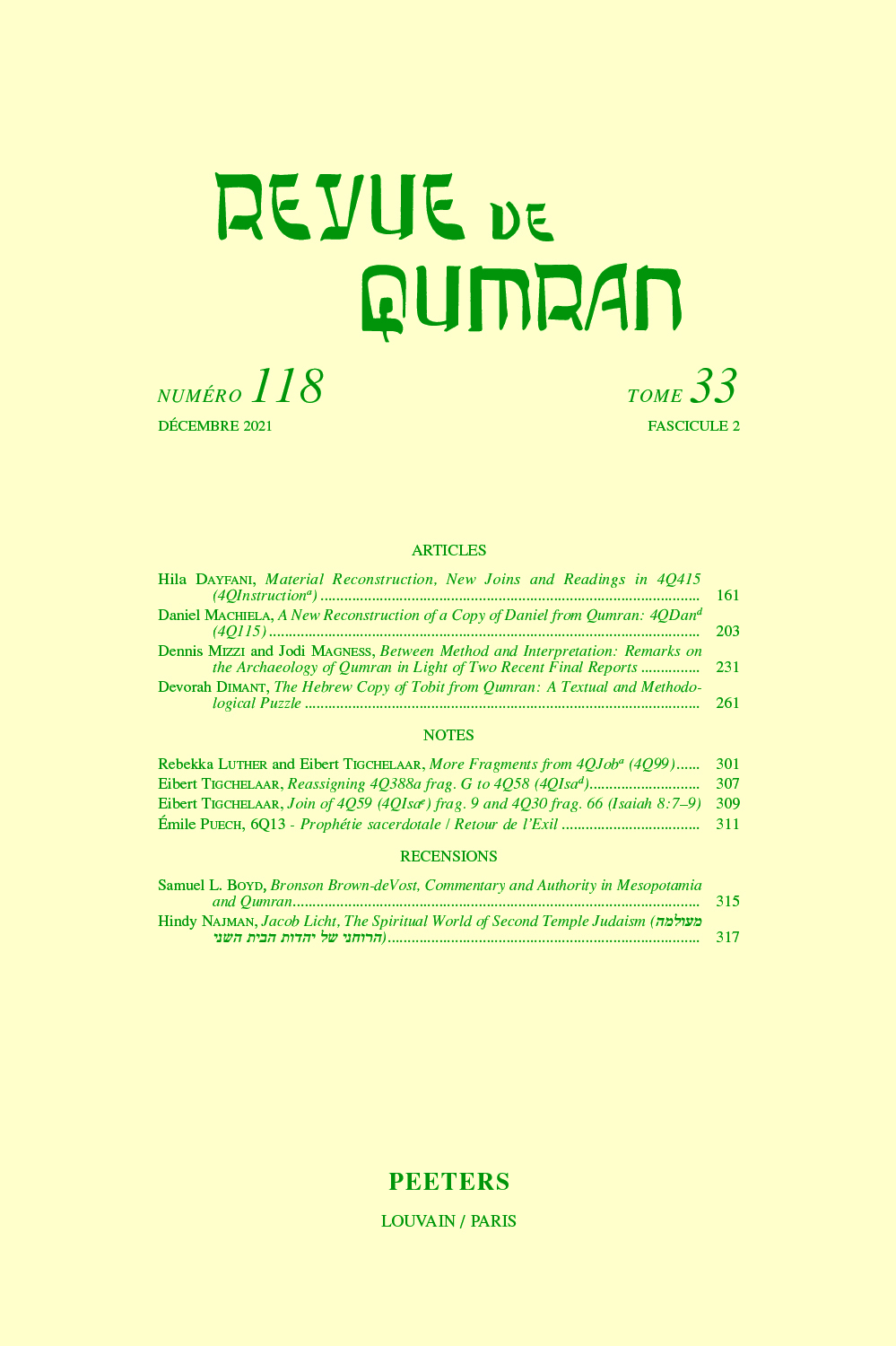 previous article in this issue previous article in this issue | next article in this issue  |

Preview first page |
Document Details : Title: Archival and Scientific Analyses of the Allegro Qumran-Type Jar and Lid Author(s): MIZZI, Dennis , TAYLOR, Joan E. , BADRESHANY, Kamal , FIDANZIO, Marcello Journal: Revue de Qumran Volume: 36 Issue: 1 Date: numéro 123, 2024 Pages: 49-115 DOI: 10.2143/RQ.36.1.3293415 Abstract : The Leverhulme-funded Network for the Study of Dispersed Qumran Cave Artefacts and Archival Sources (DQCAAS) commissioned the scientific testing of a mysterious deposit found inside a Qumran-type jar lid, now in a private collection. Along with a cylindrical jar, this lid was purchased in 1963 by John Allegro from the antiquities dealer Kando in Bethlehem, who was told that the objects came from a cave in the immediate Qumran area. The time of sale has been carefully verified through records documenting the acquisition of the objects, and these are presented here as an example of good practice when dealing with unprovenanced artefacts. In terms of the find spot, the Bedouin testimony coheres with material evidence that Bedouin continued clandestine excavations in caves close to the site of Qumran through the early 1960s. The precise find spot cannot be determined exactly, but both the jar and lid have a condition that would match what we would expect in a cave environment, and their forms are the same as other Qumran jars and lids, which are of a class not found anywhere else. John Allegro believed that the hardened residue was 'bat dung', but this was never verified scientifically. A sample of the lid deposit was extracted and sent for analysis at Quest (Quarternary Scientific), within the School of Archaeology, Geography and Environmental Science at the University of Reading, UK. The results have concluded that the unknown material likely derives from a member of the sedge (Cyperaceae) family, such as the papyrus sedge, which is not local to the Dead Sea area, and therefore probably comes from one or more degraded papyrus scrolls. The new results would suggest that a jar in a Qumran cave fell over and its papyrus contents spilled into the detached lid, then decomposed over the centuries. This supports the theory that, near Qumran, other caves than those designated as 'scroll caves' did once contain manuscripts in antiquity. |
|


